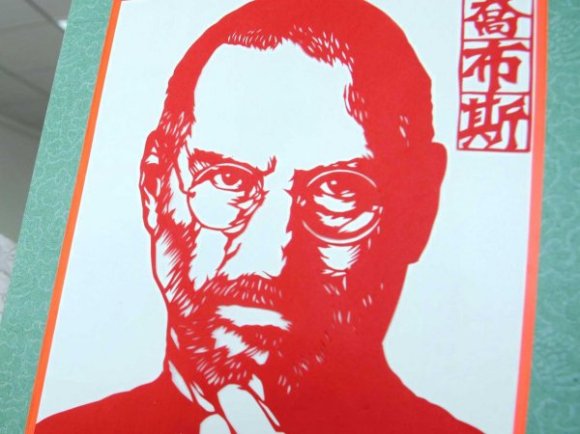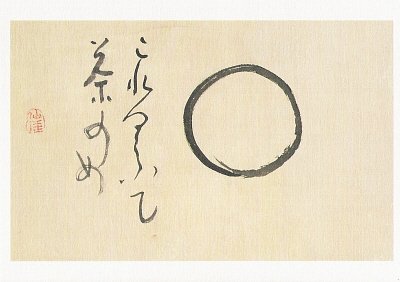
When Steve Jobs showed up at the San Francisco airport at the age of 19, his parents didn’t recognize him.
Jobs, a Reed College dropout, had just spent a few months in India.
He had gone to meet the region’s contemplative traditions — Hinduism, Buddhism — and the Indian sun had darkened his skin a few shades.
The trip changed him in less obvious ways, too.
Although you couldn’t predict it then, his travels would end up changing the business world.
Back in the Bay Area, Jobs continued to cultivate his meditation practice. He was in the right place at the right time; 1970s San Francisco was where Zen Buddhism first began to flourish on American soil. He met Shunryu Suzuki, author of the groundbreaking “Zen Mind, Beginners Mind,” and sought the teaching of one of Suzuki’s students, Kobun Otogawa.
Jobs met with Otogawa almost every day, Walter Isaacson reported in his biography of Jobs. Every few months, they’d go on a meditation retreat together.
Zen Buddhism, and the practice of meditation it encouraged, were shaping Jobs’ understanding of his own mental processes.
“If you just sit and observe, you will see how restless your mind is,” Jobs told Isaacson. “If you try to calm it, it only makes things worse, but over time it does calm, and when it does, there’s room to hear more subtle things — that’s when your intuition starts to blossom and you start to see things more clearly and be in the present more. Your mind just slows down, and you see a tremendous expanse in the moment. You see so much more than you could see before. It’s a discipline; you have to practice it.”
Jobs felt such resonance with Zen that he considered moving to Japan to deepen his practice. But Otogawa told him he had work to do in California.
Evidently, Otogawa was a pretty insightful guy.
When you look back at Jobs’ career, it’s easy to spot the influence of Zen. For 1300 years, Zen has instilled in its practitioners a commitment to courage, resoluteness, and austerity — as well as rigorous simplicity.
Or, to put it into Apple argot, insane simplicity.
Zen is everywhere in the company’s design.
Take, for instance, the evolution of the signature mouse:
It’s the industrial design equivalent of the enso, or hand-drawn circle, the most fundamental form of Zen visual art.
But Zen didn’t just inform the aesthetic that Jobs had an intense commitment to, it shaped the way he understood his customers. He famously said that his task wasn’t to give people what they said they wanted; it was to give them what they didn’t know they needed.
“Instead of relying on market research, [Jobs] honed his version of empathy — an intimate intuition about the desires of his customers,” Isaacson said.
What’s the quickest way to train your empathy muscles? As centuries of practitioners and an increasingly tall stack of studies suggest, it’s meditation.
When you take that into account, it’s easy to see that for Jobs, growing his business and cultivating his awareness weren’t opposing endeavors.
When he died, the New York Times ran a stirring quote about what he did for society: “You touched an ugly world of technology and made it beautiful.”
We can thank that time in India and on the meditation cushion for that beautiful, rigorous simplicity — one that sparked a design revolution.




 Steve Jobs…manga hero???
Steve Jobs…manga hero??? Steve Jobs Much Better at Marketing than Cooking
Steve Jobs Much Better at Marketing than Cooking iMakeover: Can a haircut turn Mr. Sato into Steve Jobs?
iMakeover: Can a haircut turn Mr. Sato into Steve Jobs? Famed educator says Steve Jobs, Bill Gates would have been ruined by Japanese education system
Famed educator says Steve Jobs, Bill Gates would have been ruined by Japanese education system Hayao Miyazaki says Happy New Year to Studio Ghibli fans with new art for Year of the Horse
Hayao Miyazaki says Happy New Year to Studio Ghibli fans with new art for Year of the Horse We revisited Sweets Paradise after a decade to see if Japan’s dessert buffet still delivers
We revisited Sweets Paradise after a decade to see if Japan’s dessert buffet still delivers One Piece devil fruit ice cream coming back to Baskin-Robbins Japan
One Piece devil fruit ice cream coming back to Baskin-Robbins Japan Pizza Hut Japan’s hot lucky bags are perfect for a New Year’s pizza party
Pizza Hut Japan’s hot lucky bags are perfect for a New Year’s pizza party We try the new Famichiki Burger from Family Mart
We try the new Famichiki Burger from Family Mart Winter walking event takes you around Totoro forest loved by Hayao Miyazaki
Winter walking event takes you around Totoro forest loved by Hayao Miyazaki Dragon Quest Burgers and Slime drinks are coming to McDonald’s Japan【Video】
Dragon Quest Burgers and Slime drinks are coming to McDonald’s Japan【Video】 Japanese AI device reads stories to your kid with your voice, even if you’ve never read them【Vid】
Japanese AI device reads stories to your kid with your voice, even if you’ve never read them【Vid】 Japan’s deadliest food claims more victims, but why do people keep eating it for New Year’s?
Japan’s deadliest food claims more victims, but why do people keep eating it for New Year’s? Final Fantasy and Shinkansen announce collaboration with in-train audio play, SD art and merch
Final Fantasy and Shinkansen announce collaboration with in-train audio play, SD art and merch Starbucks Japan ready to get Year of the Horse started with adorable drinkware and plushies【Pics】
Starbucks Japan ready to get Year of the Horse started with adorable drinkware and plushies【Pics】 Cyberpunk anime meets traditional culture in Ghost in the Shell gold leaf Japanese changing screens
Cyberpunk anime meets traditional culture in Ghost in the Shell gold leaf Japanese changing screens 7 great places to see Mt. Fuji from without having to climb it
7 great places to see Mt. Fuji from without having to climb it Hello Kitty Choco Egg figures are an adorable trip through three periods of Japanese pop culture【Pics】
Hello Kitty Choco Egg figures are an adorable trip through three periods of Japanese pop culture【Pics】 7-Eleven Japan’s ramen-cooking robot whipped us up a bowl of noodles【Taste test】
7-Eleven Japan’s ramen-cooking robot whipped us up a bowl of noodles【Taste test】 We found possibly the quietest Japanese-style hotel in Tokyo’s bustling Shinjuku district
We found possibly the quietest Japanese-style hotel in Tokyo’s bustling Shinjuku district Japan’s otoshidama tradition of giving kids money at New Year’s gets a social welfare upgrade
Japan’s otoshidama tradition of giving kids money at New Year’s gets a social welfare upgrade Sumo Sanrio! Hello Kitty and pals team up with Japan Sumo Association for new merch【Pics】
Sumo Sanrio! Hello Kitty and pals team up with Japan Sumo Association for new merch【Pics】 More Than a Capsule Stay: Why Solo Travelers Choose “global cabin Yokohama Chinatown”
More Than a Capsule Stay: Why Solo Travelers Choose “global cabin Yokohama Chinatown” Japan’s oldest largetooth sawfish in captivity back on display in Mie Prefecture
Japan’s oldest largetooth sawfish in captivity back on display in Mie Prefecture 7-Eleven Japan starts new temporary luggage storage service in over 300 branches
7-Eleven Japan starts new temporary luggage storage service in over 300 branches Disillusionment at Tsukiji’s tourist-target prices led us to a great ramen restaurant in Tokyo
Disillusionment at Tsukiji’s tourist-target prices led us to a great ramen restaurant in Tokyo Starbucks teams up with 166-year-old Kyoto doll maker for Year of the Horse decorations【Photos】
Starbucks teams up with 166-year-old Kyoto doll maker for Year of the Horse decorations【Photos】 Tokyo considering law requiring more trash cans following litter increase in heavily touristed area
Tokyo considering law requiring more trash cans following litter increase in heavily touristed area Tokyo’s Tsukiji sushi neighborhood asks tour groups to stay away for the rest of the month
Tokyo’s Tsukiji sushi neighborhood asks tour groups to stay away for the rest of the month Tokyo event lets you travel back in time, for free, to celebrate 100 years since Showa era start
Tokyo event lets you travel back in time, for free, to celebrate 100 years since Showa era start Sanrio theme park in Japan announces plans to expand into a Sanrio resort
Sanrio theme park in Japan announces plans to expand into a Sanrio resort Japan may add Japanese language proficiency, lifestyle classes to permanent foreign resident requirements
Japan may add Japanese language proficiency, lifestyle classes to permanent foreign resident requirements Stamina-destroying “Paralysis Noodles” are Tokyo’s newest over-the-top ramen innovation
Stamina-destroying “Paralysis Noodles” are Tokyo’s newest over-the-top ramen innovation Survey asks foreign tourists what bothered them in Japan, more than half gave same answer
Survey asks foreign tourists what bothered them in Japan, more than half gave same answer Japan’s human washing machines will go on sale to general public, demos to be held in Tokyo
Japan’s human washing machines will go on sale to general public, demos to be held in Tokyo We deeply regret going into this tunnel on our walk in the mountains of Japan
We deeply regret going into this tunnel on our walk in the mountains of Japan Studio Ghibli releases Kodama forest spirits from Princess Mononoke to light up your home
Studio Ghibli releases Kodama forest spirits from Princess Mononoke to light up your home Major Japanese hotel chain says reservations via overseas booking sites may not be valid
Major Japanese hotel chain says reservations via overseas booking sites may not be valid Put sesame oil in your coffee? Japanese maker says it’s the best way to start your day【Taste test】
Put sesame oil in your coffee? Japanese maker says it’s the best way to start your day【Taste test】 No more using real katana for tourism activities, Japan’s National Police Agency says
No more using real katana for tourism activities, Japan’s National Police Agency says Starbucks Japan reveals new sakura drinkware collection, inspired by evening cherry blossoms
Starbucks Japan reveals new sakura drinkware collection, inspired by evening cherry blossoms Updated cherry blossom forecast shows extra-long sakura season for Japan this year
Updated cherry blossom forecast shows extra-long sakura season for Japan this year
Leave a Reply